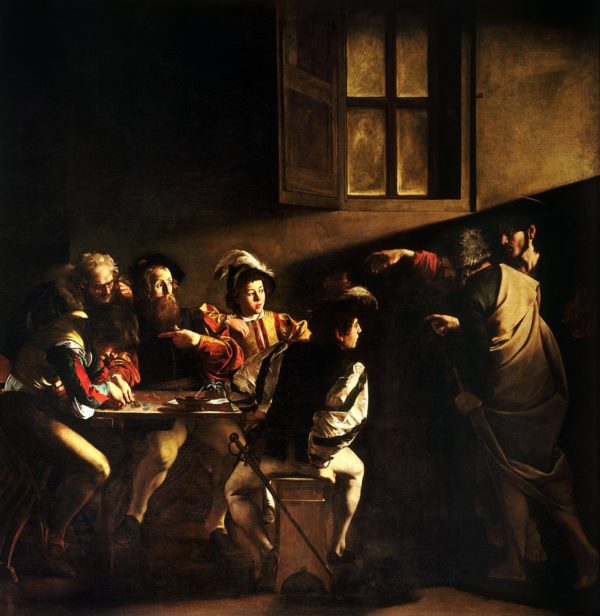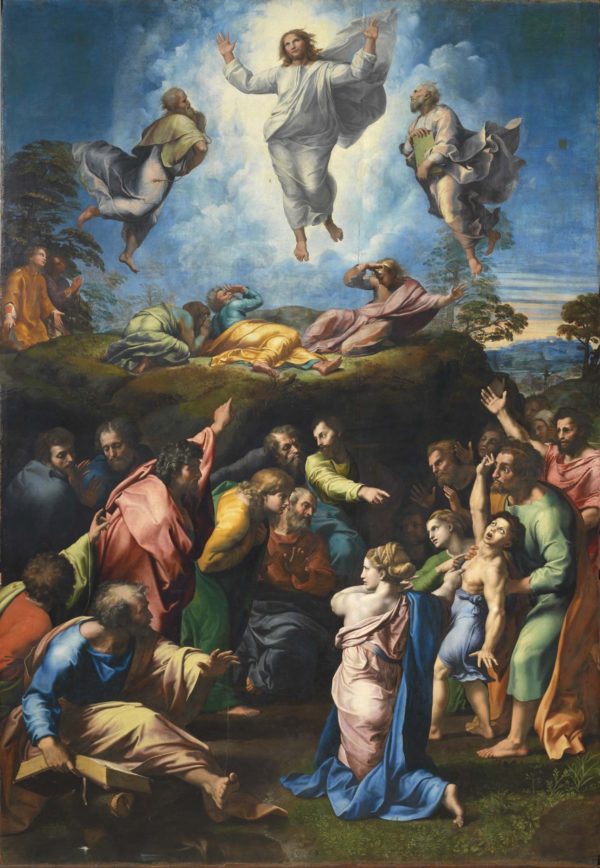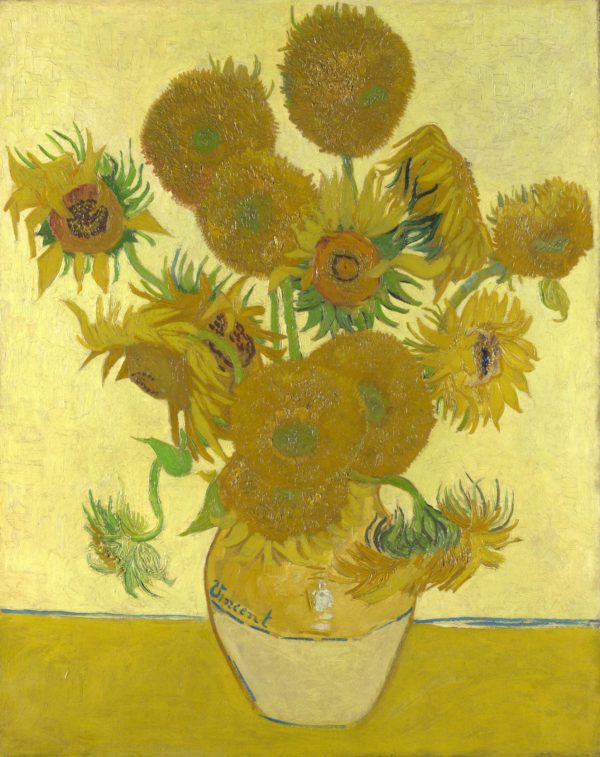Art Use of Visual Elements to Convey a Message or Evoke Emotion
All aesthetic experiences possess the power to arouse strong emotions. As children, we begin making connections to understand simple concepts. We learn that when a bottle appears, we are most to exist fed, and when the lights dim, it'south time to sleep. However, as nosotros grow older, these connections become more conceptual and we come up to acquaintance certain images with emotions. These associations can be rooted in personal retentiveness, a specific culture, or a wider human consciousness. When we look at fine art, each expression, colour or symbol acts as a visual cue that triggers an emotional response past calling upon these deep-seated associations. Every bit an creative person, what tools tin you employ to draw from this well of associations? We share the four essential principles for evoking emotion through your fine art.
Lighting

We oftentimes use low-cal as a metaphor for someone's graphic symbol. A happy person may 'light upwardly the room', whilst a more sinister personality may exist described as 'dark character'. When choosing the lighting for your subject field, it's important to bear these connotations in mind. Lighter images tend to arm-twist feelings of joy, openness or freedom, whilst dimly lit scenes convey a sense of sadness, evil, mystery or illegality. Painters like Caravaggio became famous for their use of 'chiaroscuro', a technique which employs stiff contrasts betwixt light and nighttime in order to emphasise the emotional intensity of a scene or the psychological complexity of a field of study.

The direction of calorie-free, too, can play a vital role in creating a specific emotional tone. Lite from above can evoke a feeling of calm, or gesture towards the divine, as in Raphael'south The Transfiguration (1516–twenty). However, light from beneath, sometimes known as 'horror lighting', tin leave usa feeling uneasy, as its unnatural positioning distorts facial features and exaggerates shadows effectually the optics.
Colour
A basic understanding of colour theory can significantly improve the emotional bear upon of your artworks. It explains how we perceive colours, the visual effects of mixing, matching, and contrasting dissimilar colours, and the messages they are able to communicate. Colours tin can have a profound upshot on the ways we reply to art. Studies have shown that looking at the colour ruby-red, for instance, can even raise your eye rate!
Picasso's Blue Period is a keen instance of how color tin be used to evoke emotion; his common cold palette of grey and bluish perfectly captures the chill of despair in his subjects. Conversely, a painting like Vincent Van Gogh'south Sunflowers (1888) makes use of warm yellow and orange tones which radiate feelings of hope and joy.

Side by side time you're planning a piece, experiment with photoshop'south color filter before y'all beginning. Colours have the ability to tap into our most basic instincts, then ane of the surest means to evoke emotion through your fine art is from inside your palette.
Composition and perspective
Composition and perspective shape the viewer'southward experience of the artwork. Perspective tin help us position ourselves within the piece of art, and call upon our ability to empathise, whilst composition tin help to set the rhythm or mood of a piece. Every bit humans, nosotros are naturally drawn to symmetry, then pieces with a symmetrical limerick can manifest an temper of harmony, whilst asymmetrical, crammed or unbalanced compositions can produce a sense of chaos or awkwardness.
In religious art, our gaze is often directed upwards, to create a sense of awe. This is echoed in the piece of work of romantic painters like Turner and Constable who evoked notions of the sublime by painting vast, dramatic landscapes, punctuated with tiny figures to emphasise the enormity of nature.
Distance and space are closely linked to emotion, so if your work is figurative, remember near the proximity between your subjects. A single figure, or two figures sabbatum apart in an enclosed infinite can provoke sadness past inferring loneliness and isolation, equally in the paintings of Edward Hopper. Whereas, portraying multiple figures in an open space may conjure feelings of unity or togetherness. Any you're trying to evoke in your viewer, these unproblematic tricks in composition and perspective can help you get there.
Symbolism
Symbolism has been used past artists for millennia to evoke emotions past way of metaphor, drawing from the circuitous web of associations in our collective imagination. In symbolism, animals, flowers and objects frequently come to stand in for an thought or a concept, though their exact meaning may differ from culture to civilization. The symbol of the serpent, for example, holds pregnant weight in Christian art, where it has been used to portray ideas of evil and destruction. In ancient Chinese cultures, however, snakes were a symbol of good luck, harvest and reproduction. So, when using symbolism in your ain work, information technology is important that you sympathise your audience in guild for it to be effective.
Hope (1886) by George Frederic Watts is an fantabulous instance of a piece of work which harnesses the suggestive power of symbols: It depicts a blindfolded woman seated on a globe whilst playing a lyre with only ane remaining string. Despite her melancholic surroundings and lack of sight, the personified hope of Watt's painting holds to her breast the chance to make a symphony from a single cord.
Source: https://blog.artweb.com/how-to/evoke-emotion-through-your-art/
0 Response to "Art Use of Visual Elements to Convey a Message or Evoke Emotion"
Post a Comment